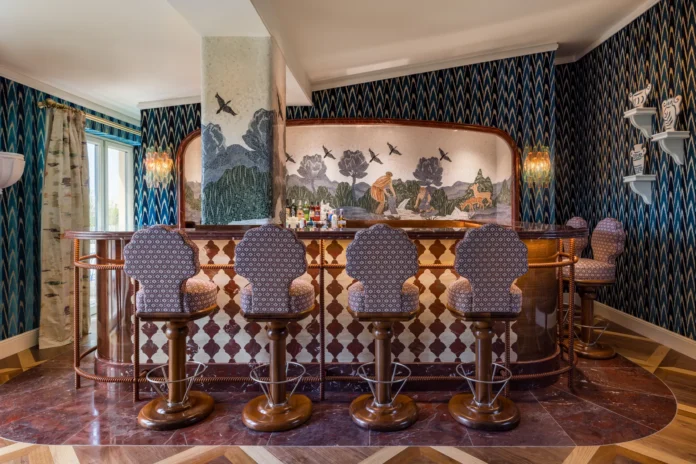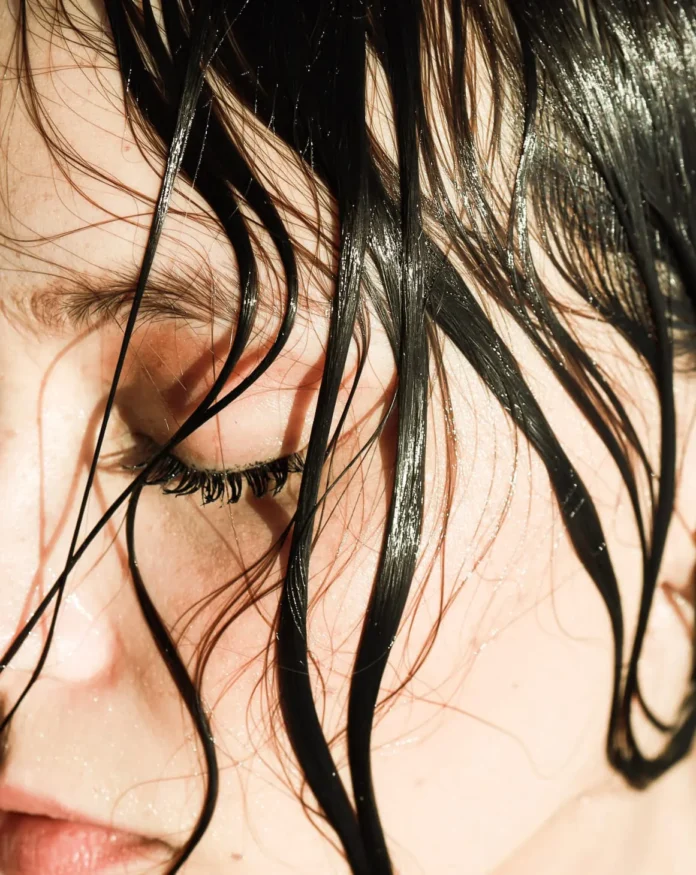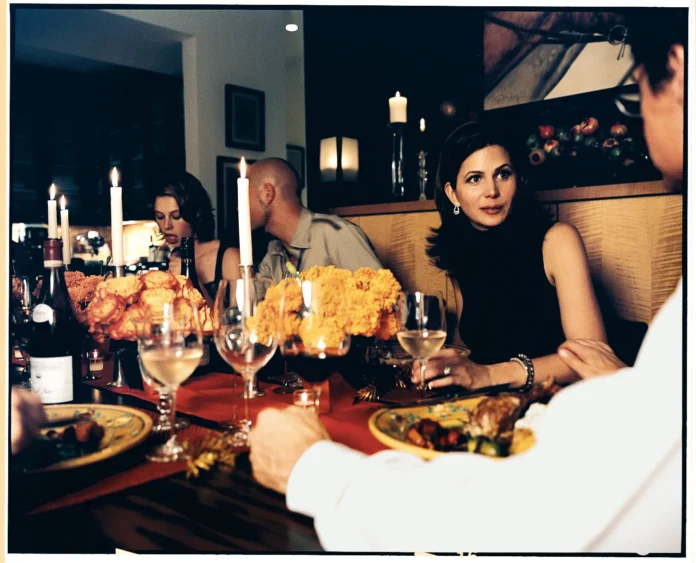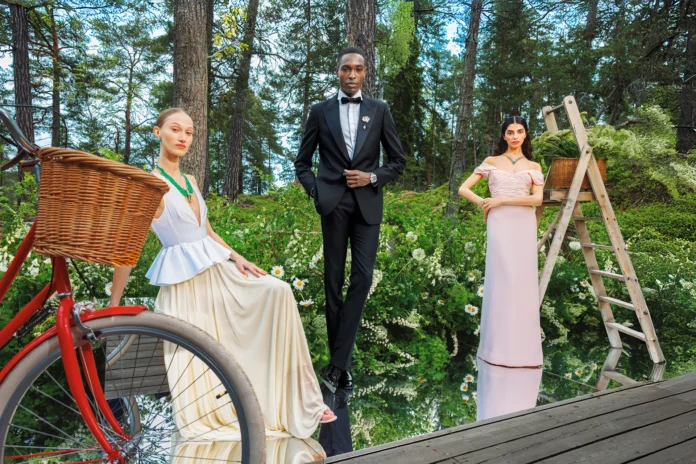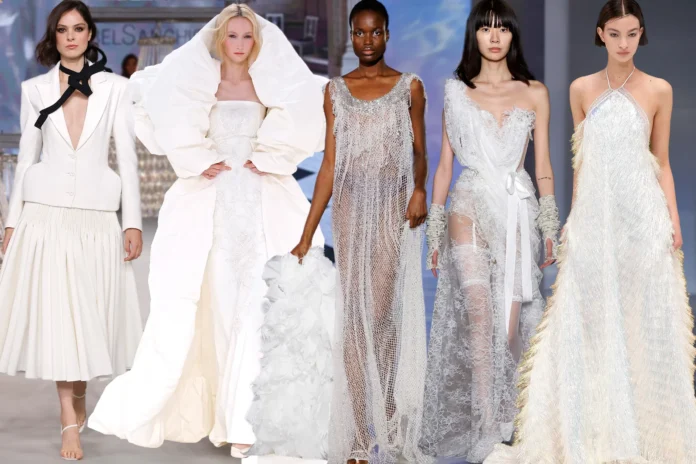The stark white walls and sleek, monochromatic interiors that once defined luxury are officially a thing of the past. If there were any doubt, the newly opened Printemps department store in New York has hammered the final nail into minimalism’s coffin—with a gilded, ruby-studded mallet.
Stepping into the historic Crown Building on Fifth Avenue, visitors are immediately engulfed in a world of decadence: a “Red Room” with a shimmering mosaic floor resembling a river of rubies, gold-leaf accents dripping from every corner, and an atmosphere so unabashedly luxurious it feels like walking into a modern-day Versailles. This isn’t just shopping—it’s theater. And it signals a seismic shift in what luxury means today.
Maximalism Makes a Grand Entrance
For years, minimalism reigned supreme. The fashion world worshipped at the altar of Phoebe Philo’s quiet luxury, interiors favored Scandinavian “hygge,” and even high-end retail spaces embraced sterile, gallery-like aesthetics. But Printemps’ New York debut flips the script entirely.
Instead of muted neutrals, the store embraces crimson, gold, and deep emerald. Instead of sparse displays, it offers ornate, sensory overload—chandeliers dripping with crystals, velvet-draped fitting rooms, and a beauty hall designed like a jewel box. The message is clear: luxury is no longer about restraint. It’s about indulgence.
Why the Shift?
The resurgence of maximalism isn’t just a rejection of minimalism—it’s a reflection of the times. After years of pandemic-induced isolation and a cultural obsession with “quiet luxury,” people are craving vibrancy, excitement, and fantasy.
“Minimalism served its purpose—it felt safe, controlled,” says interior designer Miles Redd, known for his bold, theatrical spaces. “But now, we’re all desperate for joy, for something that feels alive. Maximalism delivers that in spades.”
Printemps, with its Parisian heritage of opulence, is the perfect brand to lead the charge. The New York outpost channels the grandeur of its Boulevard Haussmann flagship—think gilded mirrors, Baroque-inspired detailing, and sumptuous textures—but with a contemporary twist.
How to Embrace the Maximalist Revival
If Printemps’ aesthetic has you ready to ditch your beige couch and embrace the drama, here’s how to do it without tipping into chaos:
1. Go Bold With Color
The Red Room’s crimson-and-gold palette proves that rich, saturated hues are back in a big way. Try a deep red accent wall, an emerald velvet sofa, or even gold-leafed trim for a touch of Printemps-worthy glam.
2. Mix Patterns Fearlessly
Maximalism thrives on contrast. Pair stripes with florals, animal prints with geometrics—just keep a unifying color thread to avoid visual overload.
3. Embrace the “More Is More” Mentality
Gallery walls, layered rugs, stacks of coffee table books—curated clutter is key. The goal isn’t hoarding; it’s creating a space that feels collected and alive.
4. Luxe Materials Are Non-Negotiable
Velvet, silk, marble, brass—maximalism demands texture. Even in small doses (a velvet throw pillow, a brass lamp), these finishes add instant opulence.
5. Don’t Forget the Glamour
A crystal chandelier, a gilded mirror, or even a single oversized floral arrangement can elevate a room from boring to breathtaking.
The Future of Retail (And Design)
Printemps’ New York store isn’t just a retail space—it’s a harbinger of what’s next. As consumers tire of the impersonal, algorithm-driven shopping experience, physical stores are doubling down on spectacle.
“Why would anyone leave their house to shop online in person unless it’s an experience?” says retail strategist Liza Frame. “Printemps gets that. This isn’t just about selling products; it’s about selling a fantasy.”
And that fantasy, it seems, is unapologetically extravagant.
The Takeaway
Minimalism had its moment. But as Printemps proves, the pendulum has swung—and it’s landed squarely in the realm of drama, decadence, and delight. Whether you’re ready to redecorate your home in full maximalist glory or just dip a toe in with a single statement piece, one thing is certain: the age of “less is more” is over.
Welcome to the era of “more is everything.”
